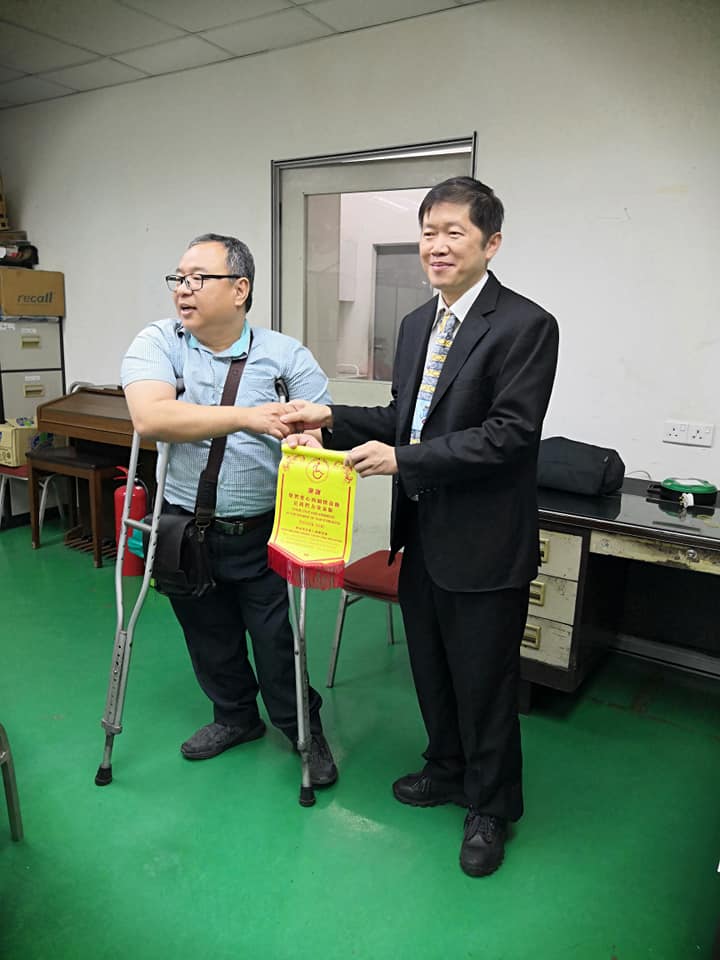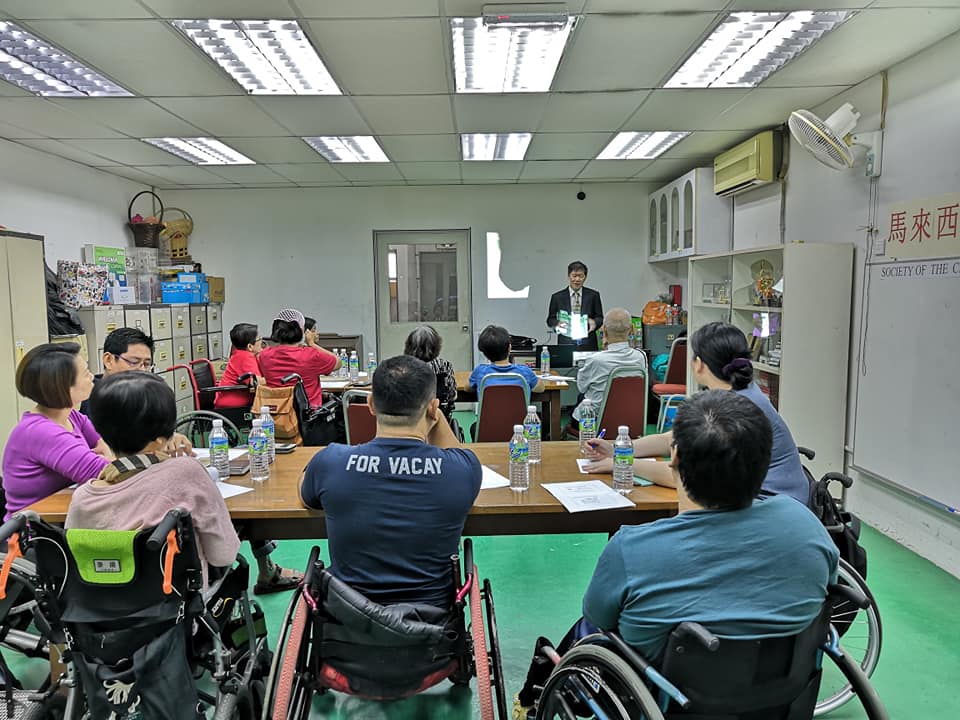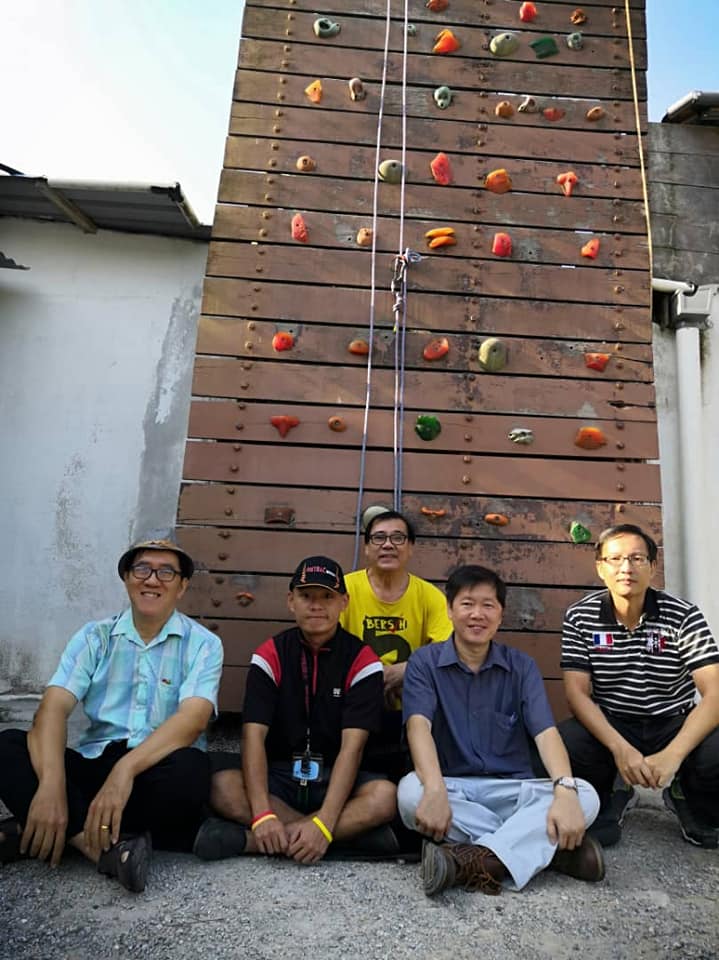Leadership & Management Training
CatEagle provides Leadership & Management and Personal Development training to corporate, local municipal, universities, NGO, religious body, enterprises and government agencies.
CatEagle also provides Technical Team Building (Technical blended with Team Building) @ different team building from the market – Self innovated Technical Team Building
SECTION 1: WHAT IS GOAL
SECTION 2: SCIENTIFIC, QUALITATIVE AND QUANTITATIVE
SECTION 3: SMART GOAL and FLOW CHART
SECTION 4: SMART GOAL METHODOLOGY
SECTION 5: Specific; Measurable; Attainable; Realistic; Time-bound
SECTION 6: SMART GOAL AND SWOT
SECTION 7: WORKSHOP

Provide SMART Goal training – volunteer to Malaysia Chinese Disable Association
SECTION 1: The core concept of SWOT
SECTION 2: PEST and PESTLE strategy
SECTION 3: RISK matrix
SECTION 4: Prioritization
SECTION 5: Brief new 7 QC tools
SECTION 6: Workshop

Provide SWOT analysis and advanced SWOT to Malaysia Disable development Center
SECTION 1: The core concept of SWOT
- How to conduct departmental SWOT
- Using SWOT Analysis in Project Management
- Activities by departments
- Formulation of departmental SWOT analysis
- Gain a realistic picture of your company’s position, market, and potential
- Understand how customer and business changes affect your company’s ability to succeed
- Analyze where your business stands in relation to your key competitors
SECTION 2: SMART goal methodology
- Specific
- Measurable
- Attainable
- Realistic
- Time-bound
- Workshop by departments
- Formulation of departmental SMART Goal
- Create an actionable business strategy, get stakeholder buy-in, and develop a complete strategy implementation map
- Improve your business skills by using the right financial and actual targets
SECTION 3: Leadership key fundamentals
- The leadership model that works
- The impact and consequences of leadership
- Your value as a leader
- One point lesson PPT
SECTION 4: PEST and PESTLE strategy
- Political Factors to Consider
- Economic Factors to Consider
- Socio-Cultural Factors to Consider
- Technological Factors to Consider
- Work activities
SECTION 5: COST control and productivity improvement
- Kaizen concept – lecture only
- Theory
- Idea and methodology
- Poka Yoke concept –
- lecture and example
- Core theory
- Lean concept – brief introduction
- Theory and idea of Lean
- Implementation method
- Six Sigma DMAIC method – brief introduction
- Design
- Measure
- Analyze
- Improve
- Control
SECTION 6: Creative Problem Solving
- Brief new 7 QC tools – lecture
- Prioritization – lecture
- Problem Solving and Decision Making – scientific approach
- Core concept
- Methodology and terminology for research
SECTION 7: Creating and Sustaining A Team Culture
- Strategies
- Principles
- Ethics
- Gratitude
- Appreciation
SECTION 8: Building trust, openness and commitment
- Team base activities
- Departmental workshop
- Games
SECTION 9: Building trust, openness and commitment
- Team base activities
- Team building games
- General Games
SECTION 10: Certificate presentation

CatEagle Elite Technical Team building team at OutBac Semenyih Camp

SECTION 1: The CORE concept of New-DISC
SECTION 2: The many quadrants of New-DISC
SECTION 3: New-Personality Theory
SECTION 4 : Traditional Personalities Theory
SECTION 5 : Personal Development Workshop
SECTION 6 : Traditional Leadership Style
SECTION 7 : Modified Base Paper New-DISC Personality Assessment
SECTION 8 : Group Discussion
SECTION 9: Building Trust, Openness and Commitment
SECTION 1: The core concept of Risk
SECTION 2: How to quantify and define Risk
SECTION 3: The 5 steps of Risk assessment
SECTION 4: Risk analysis template
SECTION 5 : Risk assessment
SECTION 6 : Workshop
SECTION 7 : Business Risk Assessment
SECTION 8 : Group activities
SECTION 9 : Group Discussion
SECTION 10 : Certificate presentation
SECTION 1: Successful Leadership
SECTION 2: Talent, Knowledge and Skill
SECTION 3: The consolidation of Strength
SECTION 4: Risk and SWOT analysis template
SECTION 5 : Leadership Domain
SECTION 6 : Workshop
SECTION 7 : Domain of Strength
SECTION 8 : Leadership challenges
SECTION 9 : New Perspective on Strength and Weakness in office and enterprises
SECTION 10 : Discussion
SECTION 11 : Certificate presentation
SECTION 1: SWOT Analysis
- Terms & Definition
- The core concepts of SWOT
- Activities
SECTION 2: One Point Lesson
- One Point Lesson PPT
- OSIR
SECTION 3: BUSINESS MODEL
- Canvas
- Relationship diagram
SECTION 4: Characteristics
- The 3 different lens
- Value = Innovation x Entrepreneur
SECTION 5: Customer Vs Quality
- Voice of Customer and Voice of Quality
- Risk analysis
SECTION 6: Certificate Presentation
SECTION 1: The successful leadership
SECTION 2: Talents, Knowledge and skills
SECTION 3: The consolidation of strength
SECTION 4: Risk and SWOT analysis template
SECTION 5 : Leadership domain
SECTION 6 : New perspective on strength and weaknesses in office and enterprise
SECTION 7 : Business Risk Assessment
SECTION 8 : Group activities
SECTION 9 : Certificate presentation
SECTION 1: The 8 qualities that make exceptional leader
SECTION 2: Leadership skill list
SECTION 3: How to build a leadership
SECTION 4: Tools for leader
SECTION 5 : Leadership domain
SECTION 6 : Discussion
SECTION 7 : Certificate presentation
SECTION 1: 优劣分析法
SECTION 2: PDCA循环规则
SECTION 3: 6W2H
SECTION 4: 精明目标设定
SECTION 5 : 任务分解法
SECTION 6 : 时间管理
SECTION 7: 八二原则
SECTION 8 : 其他
SECTION 9 : 颁发文凭
品质管理七大手法加上管理工具将让工作流程顺畅,品管七大手法是常用的统计管理方法,又称为初级统计管理方法。它主要包括控制图、因果图、相关图、排列图、统计分析表、数据分层法、直方图等所谓的QC七工具,但目前使用新管理工具乃员工入门的基础。
- 学习管理入门
- 使用系统性方法处理问题和管理
- 采用辨证方式做渐进式管理改善
- 系统化科学化,定性与定量管理制度
第一堂: SWOT 优劣分析法
- 企业竞争态势分析方法
- 评价自身的优势(优势),劣势(弱点)
- 外部竞争上的机会(机遇)和威胁(威胁)
- 猫头鹰 @ 改良优劣分析法
- 策略配对图
- 企业前进,维持,改善,撤退方法
- 猫头鹰 @ 假想敌进攻发
- 个人检讨
第二堂: SMART 精明目标規則
- 目标的定义
- 科学化定性和定量
- 精明目标流程图
- 具体性,衡量性,可达性,现实性,时间性
- @ 猫头鹰小树不让变大树法则
- 个人活动团队讨论
第三堂: PDCA 循環規則
- 制度化流程
- 目标,任务,检查,纠正
- 管理法则 – @ 小猫头鹰 OSIR
- 管理法则 – 时间进度表
- 谋略布局任务 @ 猫头鹰正面交锋 vs 侧面交锋
- 焦点 PDCA
第四堂: 5W2H
- 硬性思考规则
- 5W + 1H + 1H
- DMAIC Team Charter 团队宪章
- 部门活动与讨论
第五堂: 时间管理
- 重要与紧急
- 时间四象限图理解
- GTD 的基本方法
- 时间四象限图个人活动
- 时间四象限图团队活动
第六堂: WBS 任务分解法
- WBS 分解的原則
- 临时委员会的重要性
- 会议记录
- 里程碑和监控点会议
第七堂: 二八原則
- 马太效应
- 通用电气绩效评估法
- @ 猫头鹰绩效评估管理法
- 留住人才与排除人才法 @ 忠 vs 叛
- 活动
第八堂: 结论
- 颁发文凭
第一 :一切从大数据开始
第二 :数码化带来的改变与效益
- 销售部门与客户关系数码化
- 会计部门数码化
- 生产部门与仓库数码化
- 人力资源部门数码化
- 策略管理数码化
第三:数据保安 – 数据化带来的保安危机与解决方案
第四:如何运用外在数据工具与服务加强企业竞争力, 例如:
- Google Trends 趋势
- Google Keywords Planner 策划
- Google Ads 广告
- SEO 搜寻引擎
第五:如何运用内在数据加强企业竞争力
- Remarketing 再行销
- 客户关系管理
- Gamification 游戏化
第六:如何利用政府提供的奖掖来提升企业数码化
第七:总结
第八 :Q and A
SECTION 1: Who are the leaders
SECTION 2: Quality that make exceptional leader
- Communication
- Non verbal gestures and communication
- Coaching
- Directing the teams
- Relationship building
- Team bonding
- Motivation
SECTION 3: The leadership skills list A to Z
- Achievement, Analytical
- Business Development, Business Intelligence, Business Storytelling
- Change Leadership, Coaching, Commitment, Confidence, Collaborating, Communication, Compassion, Competitive, Confidence, Conflict Management, Conflict Resolution, Coordination, Courage, Creativity, Creative Thinking, Critical Thinking
- Decision Making, Decisiveness, Delegation, Directing Others
- Emotional Intelligence, Engagement, Enthusiastic, Entrepreneurial, Evaluative, Ethical
- Finance, Financial Management, Flexibility
- Goal Setting, Good Judgment
- Honesty, Humor
- Influencing Others, Initiative, Inspirational, Interpersonal, Integrity
- Listening, Logical Thinking
- Management, Mediating Problems, Meeting Management, Motivation, Multitasking, Moral
- Negotiating, Networking, Nonverbal Communication
- Open Minded, Optimism, Organization Strategies
- Passion, People Development, Persuasive, Planning, Positive Attitude, Problem Solving, Producing
- Relationship Building, Reporting, Recruiting, Resourceful, Respectful, Results Oriented
- Scheduling, Self-confidence, Self-direction, Self-motivation, Supportive, Strategic Change, Strategic Planning, Strategy
- Taking Risks, Team Building, Teamwork, Technology, Transformation
- Verbal Communication, Vision
SECTION 4: Gap Analysis
- What skills set you own
- Assess your leader on their skill sets
- Develop 8 examples of your strongest skills
- Assess your 10 inadequate skills
- Develop gap analysis of your inadequacy
SECTION 5 : How can you build your leadership skills
- Embark initiative
- Initiate into higher responsibilities
- Explore new venture
- Out of the box adventures
SECTION 6 : Use tools for leadership mindset
- Technical tools as avenue to demonstrate leadership
- Different technical tools
- SWOT, SMART Goal, Risk analysis, Decision making, Affinity Chart
- Why-Why, 5W1H, PDCA, Histogram, Brain storming, 7 QC, Tree Diagram
- Pareto Chart, Checksheet, Ichikawa Diagram, Project Management
- Technical mind set with tools, data and facts
SECTION 7 : Certificates Presentation
Module 1: Leadership Key Fundamentals
- The leadership model that works
- The impact and consequences of leadership
- Your value as a leader
Module 2: Leadership Success Factors
- Task, team and personal requirements
- 80-20 rules and Matthew Effect
- The power of leveraging
Module 3: Business Model
SECTION 1: BUSINESS MODEL
- Canvas
- Relationship diagram
SECTION 2: Characteristics
- The 3 different lens
- Value = Innovation x Entrepreneur
- Forced Ranking Method @ SY
SECTION 3: Customer Vs Quality
- Voice of Customer and Voice of Quality
- Risk analysis
SECTION 4: Linked Meeting Team
- Cross resources
- OFR (Output, Feedback, Resources) work sheet
Module 3: The Leadership Shift – New Age Leadership Styles
- The 21st Century Leadership Shift
- Styles of an effective leader vs ineffective leader
- Assessing your leadership traits
Module 4: (Personal Leadership Competence)
Leadership Rule #1– To be a Great Leader, Become a Great Person First
- Your attitude, emotions, behavior
Module 5: Interpersonal Leadership Competence
Leadership Rule Number #2 – The Deeper Your Relationship, the Stronger your Leadership
- Building trust, openness and commitment
Module 6: (Performance Management Competence)
Leadership Rule Number #3: Disciplines of planning, disciplines of execution
- Thinking strategically
- Planning performance
- Managing Performance
- Giving and receiving feedback
- Reviewing and following up
- Going against the “whirlwind”
Module 7: Creating and Sustaining A Team Culture
- Strategies, Principles, Ethics, Gratitude and Appreciation
Module 8: Technical Leadership Skills
SECTION 1: The core concept of SWOT
- How to conduct departmental SWOT
- Using SWOT Analysis in Project Management
- Activities by departments
- Formulation of departmental SWOT analysis
- Gain a realistic picture of your company’s position, market, and potential
- Understand how customer and business changes affect your company’s ability to succeed
- Analyze where your business stands in relation to your key competitors
SECTION 2: SMART goal methodology
- Specific ;
- Measurable ;
- Attainable ;
- Realistic ;
- Time-bound
- Workshop by departments
- Formulation of departmental SMART Goal
- Create an actionable business strategy, get stakeholder buy-in, and develop a complete strategy implementation map
- Improve your business skills by using the right financial and actual targets
SECTION 3: PEST and PESTLE strategy
- Political Factors to Consider
- Economic Factors to Consider
- Socio-Cultural Factors to Consider
- Technological Factors to Consider
- Work activities
SECTION 4: COST control and productivity improvement
- Kaizen concept – lecture only
- Theory
- Idea and methodology
- Poka Yoke concept –
- lecture and example
- Core theory
- Lean concept – brief introduction
- Theory and idea of Lean
- Implementation method
- Six Sigma DMAIC method – brief introduction
- Design
- Measure
- Analyze
- Improve
- Control
SECTION 5: Creative Problem Solving
- Brief new 7 QC tools – lecture
- Prioritization – lecture
- Problem Solving and Decision Making – scientific approach
- Core concept
- Methodology and terminology for research
Module 9: Revolutionize the New Leadership Skills
- Section 1 Effective leadership: Leading for high performance
Connect the relationship between effective leadership and performance in organizations.
- Section 2 The role of the leader: Empowerment and engaging
Embark on the empowerment, engagement and leveraging as core activities of leaders.
- Section 3 The job of the leader: Choosing and connecting
Learn about decision-making and connection as two core activities of leaders.
- Section 4 Leading with tactics and influence
Explore the significance of tactics and influence within leadership.
- Section 5 Leading teams for effective performance
Explore the functions, selections and dynamics of high-performance leadership.
- Section 6 Strategies and models for leading change
Embrace change, driving change and out of the box.
- Section 7 Mastering complexity and plurality
Explore strategies to manage the complexity inherent in leadership.
- Section 8 Reflect on your purpose as a leader
Establish alignment between your personal purpose and the purpose of your organization.
Module 10: 21st Century Leadership Model Shift
- Section 1 : Create and leverage networks to lead:
- Leverage on professional network to achieve your objectives
- Leverage on ad hoc team and task work fast
- Leverage on close circle
- Leverage on outside organization
- Section 2 : Create and maintain a high-talent, high-energy and high-alert A-team
- Develop Elite Group
- Highly alert, highly mobile, highly connected
- Section 3 : Empower second line leadership
- Enhance your ability to obtain results using stepping stones
- Pin another and few key leaders
Module 11: Presentation of Certificates

